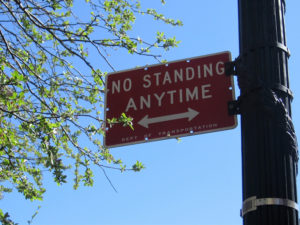In Rare Move, SJC Enters Immediate Order Reversing Decision That Broadened Density-Based Standing in Zoning Appeals
In what passes for high drama in the world of Massachusetts land use law, the Supreme Judicial Court (SJC), after hearing oral argument last Thursday in an important case involving standing in zoning appeals, entered an order the next day reversing the Appeals Court decision under review and reinstating the trial court’s decision dismissing the complaint. The SJC’s order reads simply, “The judgment of the Land Court dated June 5, 2018, dismissing the plaintiffs’ complaint for lack of standing, is hereby affirmed. Opinion to follow.”
The case is Murchison v. Zoning Bd. of Appeals of Sherborn. The Appeals Court’s decision, which came out last fall, caused a mini-earthquake within the real estate development bar. The case involves a neighbor’s challenge to a building permit authorizing the construction of a house on a vacant lot that the neighbor claims doesn’t meet the applicable lot-width requirement. The lot, which is wooded, is across a street from the neighbor’s house. Both lots are in a zoning district where the minimum lot size is three acres.
In the Land Court, the neighbor argued that he had standing to appeal because the permit allows a house to be built on a lot where no house currently exists, thereby increasing the density of the (not very dense) neighborhood.

The neighbor relied on a handful of cases holding that, at least in an area that’s already more densely developed than is allowed by current zoning (which describes most neighborhoods in most towns in eastern Massachusetts), any further increase in density is sufficient harm to establish standing – at least for an abutter to the subject lot. However, the Land Court found that in this case, the expected increase in density alone – i.e., without evidence of any actual, tangible harm to the neighbor – was insufficient to confer standing.
The Appeals Court reversed, effectively eliminating the qualifier that an increase in density may be sufficient harm to confer standing only where the neighborhood is already densely developed. The court reasoned, “The harm to a property owner from having a house across the street closer to his or her own than is permitted by the density-protective bylaws is different in kind from that suffered in an undifferentiated fashion by all residents of the neighborhood. It is sufficiently particularized to support a claim of standing to challenge the alleged violation.” In a memorable passage responding to the permit-holders’ argument that the neighbor’s claimed harm is de minimis, the Appeals Court stated:
There is no platonic ideal of overcrowding against which the plaintiffs’ claim is to be measured. Although the distance between the houses might not amount to overcrowding in an urban area, absent some constitutional concern . . . cities and towns are free to make legislative judgments about what level of density constitutes harm in various zoning districts and to codify those judgments in bylaws. It does not matter whether we, or a trial judge, or the defendants, or their counsel, would consider the district “overcrowded.” What matters is what the town has determined.
While this reasoning is sound in the abstract, as a practical matter it would give plaintiffs standing to challenge any permit authorizing any construction in any district unless the project fully (and unquestionably) complies with all zoning requirements.
The SJC, from its lofty perch atop the legal food chain, is able to brush aside pesky precedents and focus on just such practicalities. During oral argument last week, several justices seemed profoundly skeptical of the notion that a plaintiff could have standing to appeal based on the fact that something will be built on a lot where there is currently nothing (the neighbor’s counsel referred to this as “build vs. no-build” harm), where the only claimed injury beyond the mere existence of the new construction is that the plaintiff might be able to see it standing there across the street.
That the SJC has already entered an order reinstating the Land Court’s dismissal of the case tells us there’s a strong consensus among the justices both that this is the right result and that it’s urgent enough to warrant immediate action. Land use lawyers on all sides of the development equation will be waiting with bated breath for the SJC’s decision, which should be out this summer. Look for our analysis then of what could be a landmark decision on zoning standing.